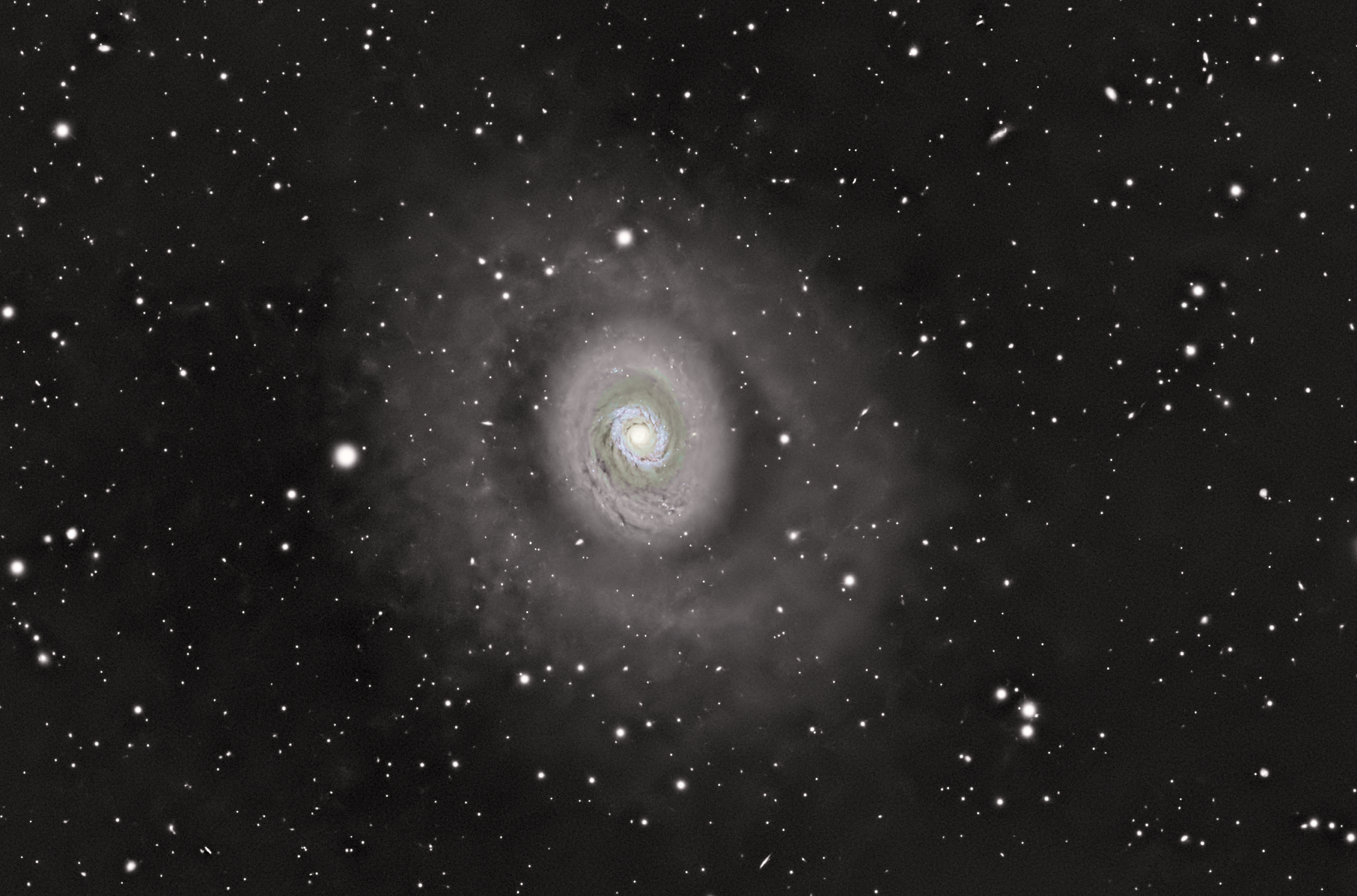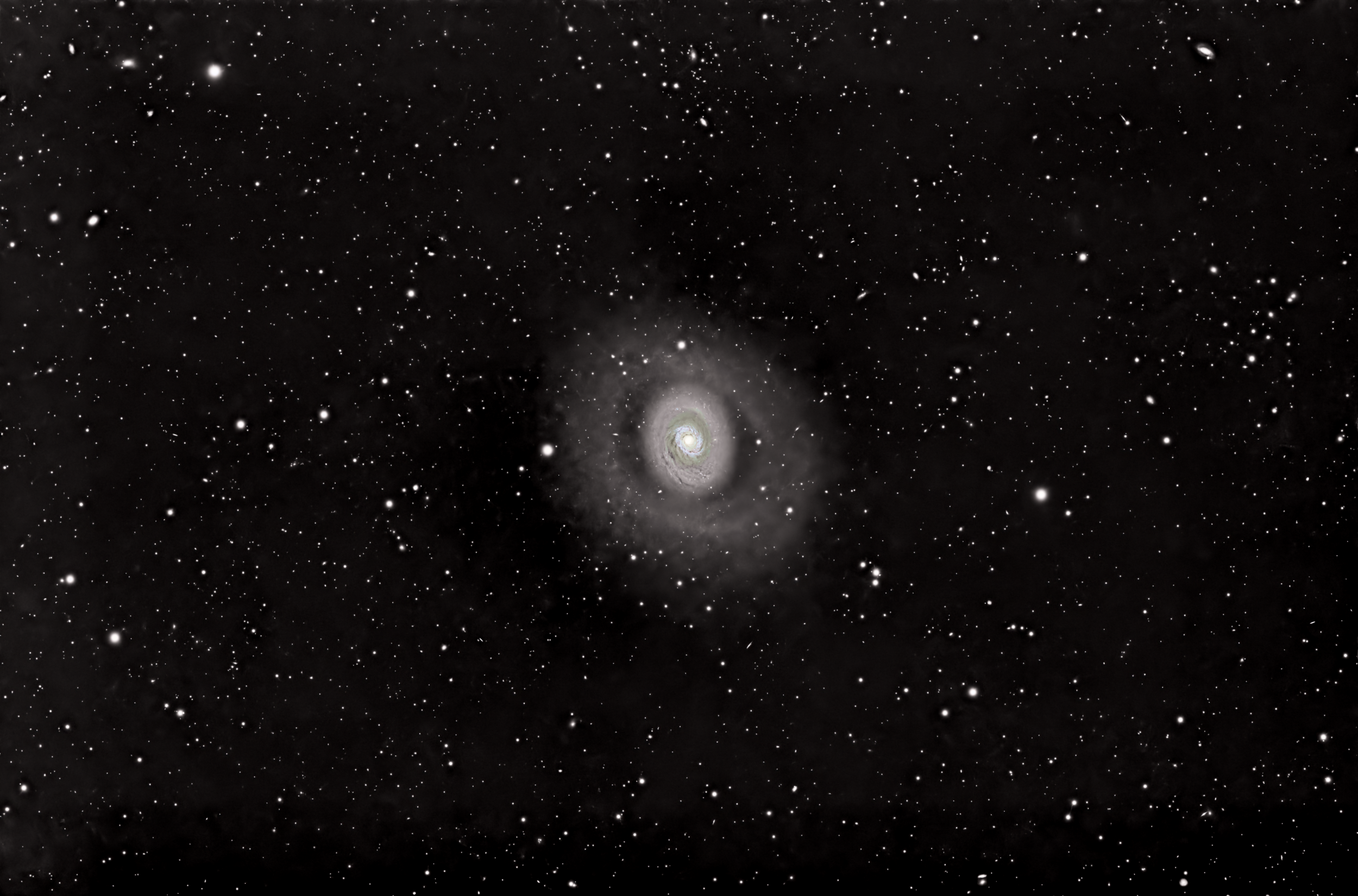

Wikipedia Description:
Messier 94 (also known as NGC 4736, Cat’s Eye Galaxy, Crocodile Eye Galaxy, or Croc’s Eye Galaxy[7][8]) is a spiral galaxy in the mid-northern constellation Canes Venatici. It was discovered by Pierre Méchain in 1781,[9] and catalogued by Charles Messier two days later. Although some references describe M94 as a barred spiral galaxy, the “bar” structure appears to be more oval-shaped.[10] The galaxy has two ring structures.[5]
At least two techniques have been used to measure distances to M94. The surface brightness fluctuations distance measurement technique estimates distances to spiral galaxies based on the graininess of the appearance of their bulges. The distance measured to M94 using this technique is 17.0 ± 1.4 Mly (5.2 ± 0.4 Mpc).[1] However, M94 is close enough that the Hubble Space Telescope can be used to resolve and measure the fluxes of the brightest individual stars within the galaxy. These measured fluxes can then be compared to the measured fluxes of similar stars within the Milky Way to measure the distance. The estimated distance to M94 using this technique is 15 ± 2 Mly (4.7 ± 0.6 Mpc).[2] Averaged together, these distance measurements give a distance estimate of 16.0 ± 1.3 Mly (4.9 ± 0.4 Mpc).
Acquisition Details:
| Telescope | Takahashi TOA-130 |
| Optics | Takahashi TOA-645 Flattener |
| Filter | None |
| Camera | ASI2600MC Pro OSC |
| Integration Time | 5.75 hours |
| Subframes | 115 x 180 seconds |
| Date | April 28, 2025 |
| Location | Carlsbad, California |